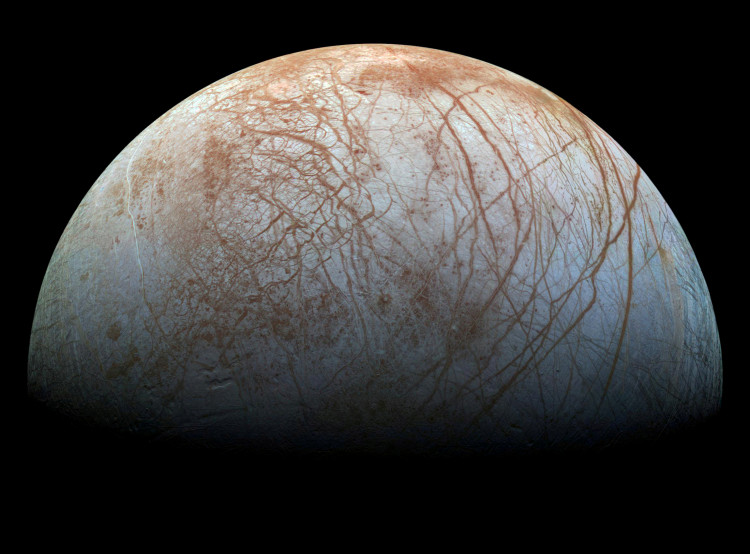A new model developed by NASA suggests that the oceans of Jupiter's moon Europa may be habitable. At 3,100 km in diameter, Europa is the smallest of the four Galilean moons orbiting Jupiter.
Data and images from the Voyager and Galileo spacecraft revealed Europa's massive storehouses of water underneath its surface. The Jet Propulsion Laboratory was able to simulate the conditions of the extraterrestrial oceans, although they are yet to find out its chemical compositions.
At a quick glance, Europa can be easily characterized as a frozen world, but scientists have since found that beneath its surface is an ocean far greater than those found on our own planet. Gravitational forces or radioactive decay from its gigantic neighbor heat the ice, melting into vast oceans. This heat also wears on mineral deposits, releasing water.
"We were able to model the composition and physical properties of the core, silicate layer, and ocean. We find that different minerals lose water and volatiles at different depths and temperatures," said Mohit Melwani Daswani, a geochemist and planetary scientist at JPL.
According to the team, the amount of mass they expected to find missing from Europa's crust was nearly the equivalent mass of the oceans, which suggests water on that world originated from minerals found on Jupiter's moon.
It was also stated in the study that other planets in nearby stars may also form water by way of physical and chemical processes triggered by combining mineral deposits.
Europa was first discovered in 1610 by Galileo Galilei, the smallest of Jupiter's four moons that the legendary astronomer contributed to mankind. The moon has only become more interesting over the years, mostly due to the continuous studies on the giant planet's and its satellites.
Europa's surface is about 20 to 180 million years old, but the satellite as a whole is believed to be as old as the solar system, which is approximately 4.5 billion years.
Observations made on Europa have revealed its intricate beauty. Scientists believe that its magnetic field holds evidence that it had liquid water at some point in its history beneath its frozen surface.
For this reason, scientists have believed that Europa is one of the best places in the solar system to find evidence of life, which is even more possible now because of the recent findings.
It turns out the oceans of Europa are not laced with sulfur -- the new model suggests that its waters are chloride-rich instead, which is what the Earth's oceans are like.



